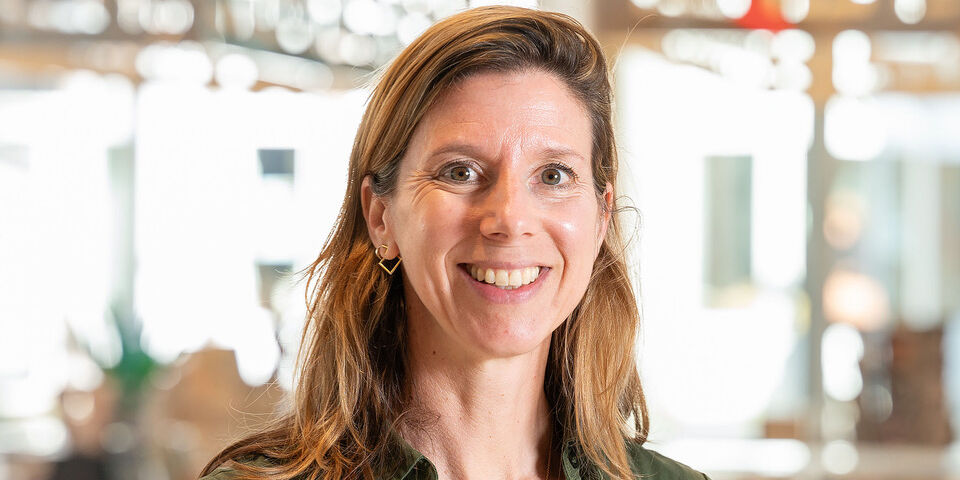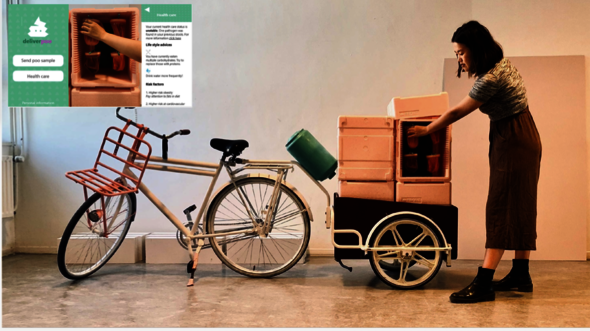Home Stretch | Improving the public debate
When we engage in public debate, we often try convincing the other party with rational arguments instead of understanding each other’s point of view, TU/e researcher Daniëlle Arets argues in her dissertation. Using design research, she developed tools and tactics to make the debate opener, more democratic and more inclusive. Last April, she defended her dissertation at the Department of Industrial Design.
Arets is a journalism lector at Fontys University of Applied Sciences, where she’s part of a research group on innovation in journalism. She also has a background as a design researcher – most notably at the Design Academy in Eindhoven – and she’s been active as a coordinator and organizer of political and public debates for years. “I’m pretty much always working on the cutting edge of design, journalism and public debate.” Her dissertation entitled ‘Save the debate’ focuses on revitalizing and improving the public debate.
Conflicting values
“The importance of public debate is often pointed out, especially in the context of strengthening democracy,” Arets says. “To improve the conducting of public debate, we need new tactics.” In her research, she looked at how you can facilitate and further the debate using design.
The terms ‘debate’ and ‘dialogue’ are often used as synonyms, but there’s a crucial difference between the two, she explains. In a debate, you try to convince each other using arguments and there’s a competitive element there; a debate can be won or lost. A dialogue, on the other hand, is about understanding each other’s views and opinions. In her dissertation, she cites sociologist Richard Sennett, who argues for what is known as ‘dialogic exchange’, where conversations are investigative in nature and are intended to reveal conflicting values. He feels this is necessary to bring about better collaboration.
Adversarial design
Arets also based her research on the work of philosopher Chantal Mouffe, who indicates you first have to acknowledge the conflict, allowing one to know exactly where it takes place and how people relate to certain themes. Arets: “Right now, we often ignore this aspect, quickly arriving at a kind of consensus politics, also known as the ‘polder model’ the Dutch are famous for.”
Instead of a rational exchange, we should therefore find better tactics geared towards subjectivity and different emotions, Arets thought. “This is what I tried to put into practice. I wondered: how can design help us do that?” One of the techniques she used to this end is adversarial design, a conceptual approach to design that aims to encourage critical thinking, challenge existing standards, and expose underlying problems or prejudices. “It’s often a bit provocative, and intended to start a conversation and reveal what tends to stay hidden,” says Arets. Another problem she wanted to tackle is the fact that people (or groups of people) are often excluded from public debate. How can you use something tangible to make sure to involve everyone, Arets wondered.
Acknowledging fear
The primary focus of her research is the debate on the smart city, where smart technologies are used to manage and govern cities. “Take implementing technology in cities. One thing this touches upon is fear of radiation, but we are generally quick to disregard the people who have these kinds of concerns.” Arets looked at how you can use design to provide space to all of the fears, emotions, and resistance against these developments.
Arets stresses how important it is to take people’s concerns seriously. “When people say they’re afraid of radiation, an expert often comes in to explain why these concerns are unjustified, because everything’s been investigated and proven to be safe. But those fears are real, so you have to acknowledge them.” Which means brushing them off is a bad debating strategy, in her opinion. “Those fears are likely to represent the sentiments of a lot of people. You can’t use rational arguments to counter those sentiments.”
DeliverPoo
Together with students at TU/e, the Design Academy and Philips, she developed DeliverPoo – a nod to meal delivery service Deliveroo. DeliverPoo should be seen as a fantasy product meant to trigger people. And the research subjects will probably be triggered when they hear human feces are to be collected from their homes to undergo a so-called ‘transformation’ into water, drugs, or food. “It’s a fairly radical idea,” Arets admits. The inspiration for the DeliverPoo concept came from the Brandevoort neighborhood in Helmond, which has been endowed with a smart zone where – among other things – toilet data is gathered. This involves a privacy component that makes for an interesting point of departure. “From poo, you can distill important insights on what people eat and how healthy or sustainable that food is, for example, but there are privacy issues. A lot of people don’t like the idea and aren’t open to such an intervention.”
DeliverPoo constitutes something concrete and tangible, providing a glimpse of the future, as it were. It’s a way to create space for the different emotions it brings out in people, Arets felt. “After all, the smart city is largely invisible,” she says. As a proof of concept, the design was featured in the exhibition room of the Dutch Design Week, with the public debate taking place around it. “We noticed a tool like this can be immensely helpful in bringing out latent frustrations,” she says. Incidentally, the idea is not for such a debate to be over and done with after one or two nights; it’s an ongoing process, she emphasizes.
In the context of her PhD research, she performed many different case studies, which always came down to the same thing: in the public debate, you shouldn’t limit yourself to exchanging facts and arguments, because then you’ll come up short. “By making things tangible and bringing about a more creative instead of rational deliberation, we can do a much better job when we engage in public debate with one another.”
PhD in the picture
What is that on the cover of your dissertation?
"A design by fabulous designer Merel Witteman; it’s a strong graphic image in which black and white thinking gradually merge."
You’re at a birthday party. How do you explain your research?
"Interaction with people, the surroundings and things. I also like to bring an imaginary microphone to parties; I guess it’s my journalistic nature."
How do you blow off steam outside of your research?
"Running and biking."
How does your research contribute to society?
"We need a better debate, where we learn to deal with the differences in society; creative deliberation tactics can contribute to this."
What is your next step?
"Design Lector in Fontys’s Journalism program."





Discussion